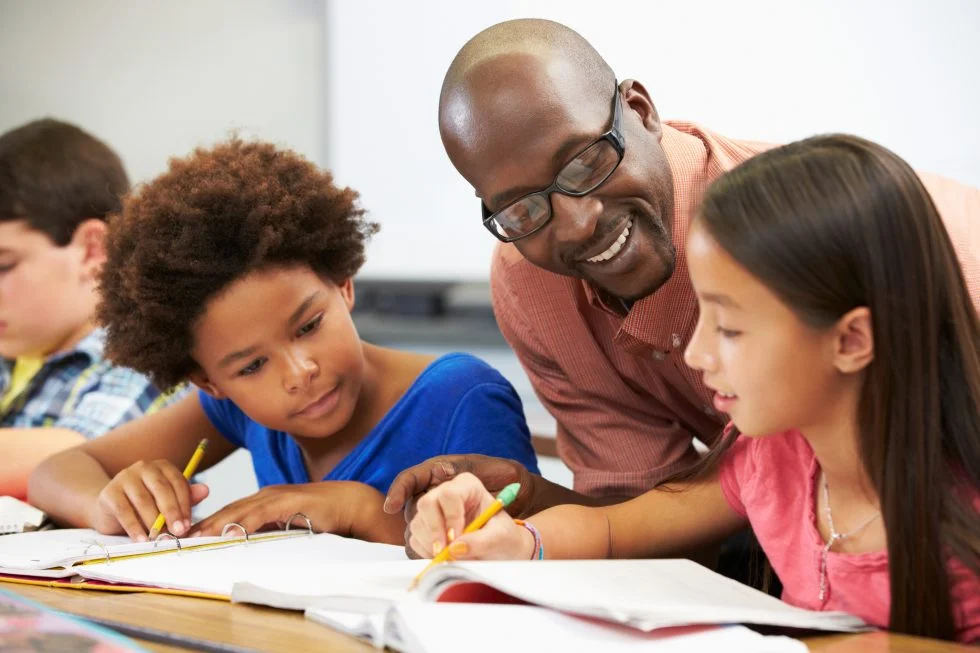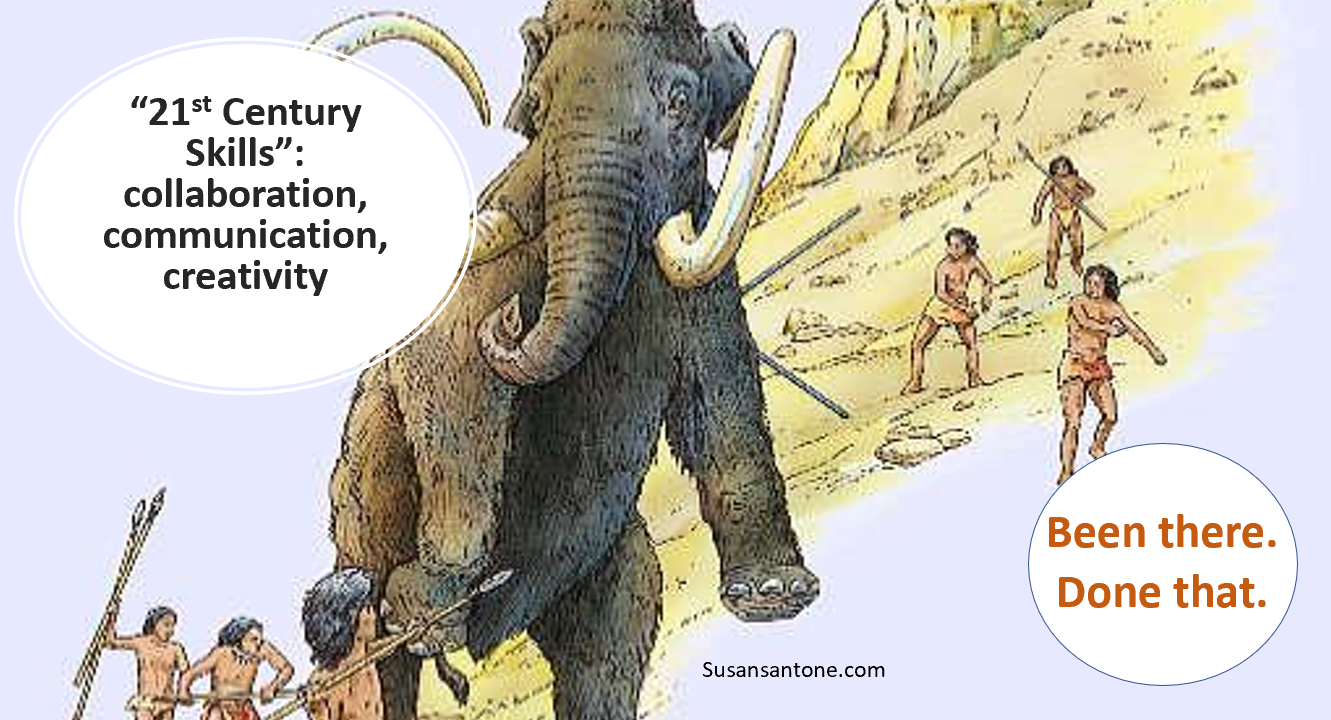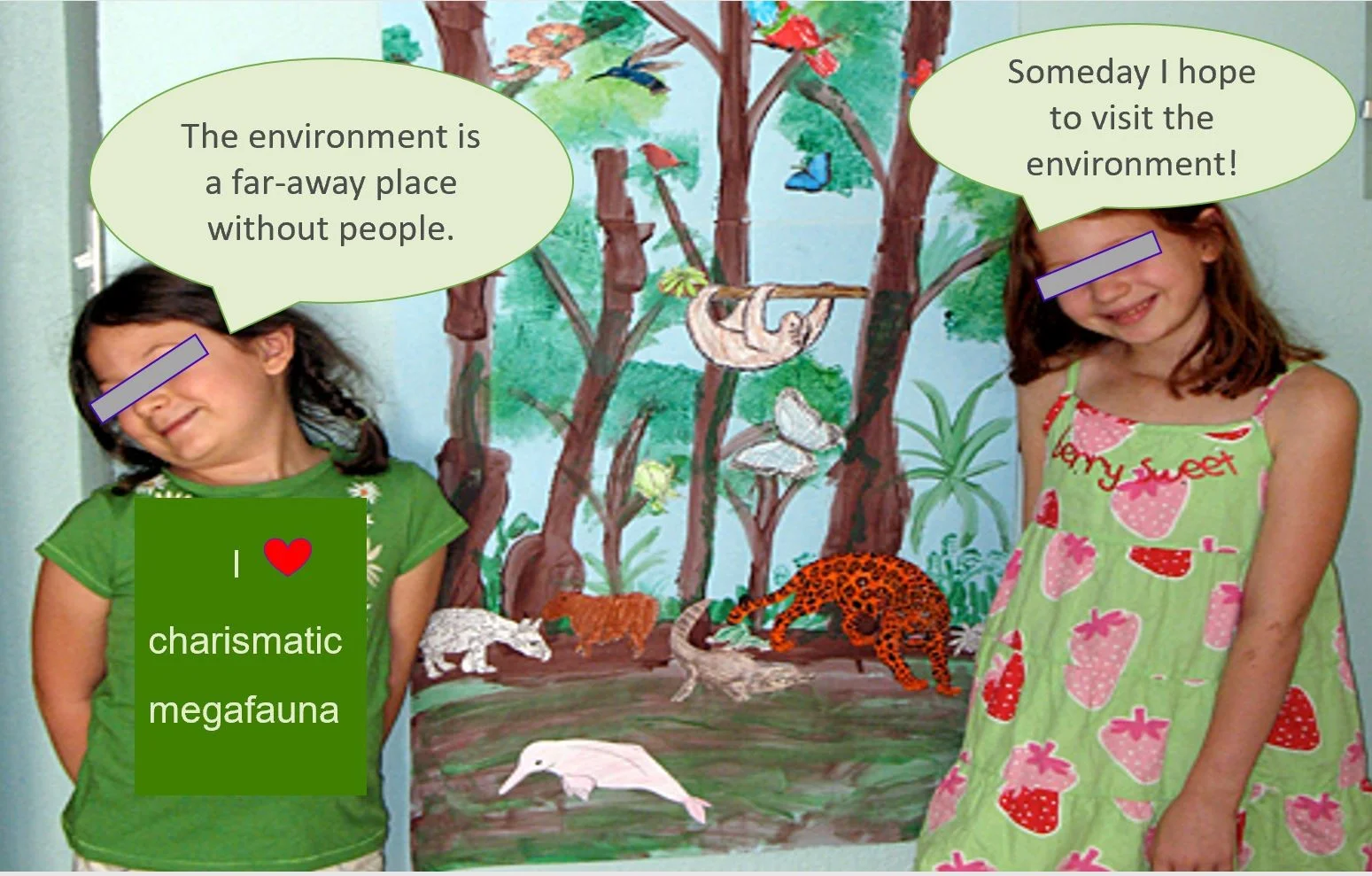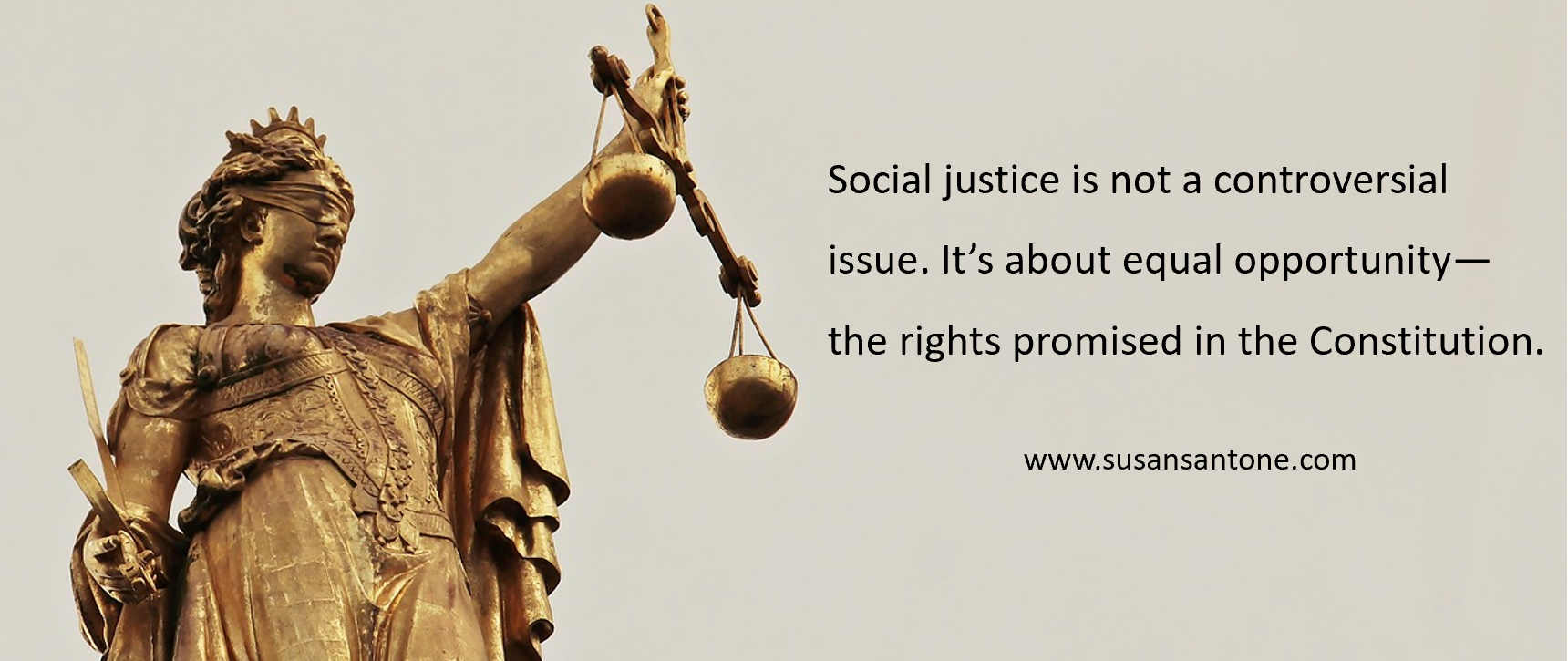Celebrating the legacy of Martin Luther King, Jr. is an annual rite in schools. But honoring his life’s work requires more than a single day of posters and speeches; it requires reorienting learning towards social justice. This blog introduces some basic principles.
Read MoreCelebrating Diversity is not Enough
Is your school taking strides to advance equity? If so, do the efforts support learning and opportunity—or reinforce stereotypes and discrimination? Understand the difference and learn what you can do to support all students.
Read MoreTeaching Kids About Consumption: A Systems Thinking Approach
When it comes to sustainability in the curriculum, consumption is a popular topic that’s relevant to kids. But how can you address this important topic in ways that build critical thinking instead of simplistic answers?
Read More22nd Century Learning Requires Ancient Skills
It’s time to rethink the mantra 21st Century Skills: They’re nothing new, and we need to aim beyond 2099.
We live in a time of great change: accelerating use of technology, global instability, shifting ground for energy security, all coupled with potential climatic changes that could create millions of climate refugees displaced by flood, drought, fire, and rising sea levels.
Against this backdrop has been the relentless call for educational reform based on “21st Century Skills” such as the oft-cited “4 Cs” of critical thinking, creativity, collaboration, and communication.collaboration. The trend was launched in part by well-funded coalitions of business leaders, educators, and technology companies, such as Achieve and The Partnership for 21st Century Skills (which became the Partnership for 21st Century Learning). Raising the alarm about dwindling U.S. competitiveness, the movement has built its rationale on the urgent need to “prepare students to compete in the global economy”—the cornerstone of neoliberalism.
Sure, jobs are crucial, but the mantra offers deafening silence about the basis for the global economy: the environment. By failing to co-center issues such as climate change, the 21st Century movement does nothing to advance economic literacy based on immutable ecological principles (the transdisciplinary thinking that defines the field of ecological economics). And, when we consider that a child born today may well live to see the 22nd Century, it’s clear that we need to look beyond 2099.
Skills for the 200th Century BCE (Before the Common Era)
No doubt collaboration, critical thinking and communication are vital skills to prepare students for the future. But far from being new, humans (and other species) have practiced these competencies for a long, long time.
Like, since the dawn of humanity.
Human adaptation and evolution has been dependent upon cooperation, relationship-building and collaboration within and across communities. Hunting and gathering—perhaps the earliest human “economy”—required extensive knowledge of the landscape as well as communication, coordination of tasks, experimenting and addressing fundamental questions such as What is safe to eat?, How can we get enough?, and What happens if we deplete this area? The big solutions of the day—such as taking down a mastodon—must have certainly required extensive planning, coordination and problem-solving. In short, these skills have been around for hundreds of centuries before the Common Era (BCE).
As we fast-forward through time, the so-called 21st Century skills were employed again and again in the development of agriculture, cities, global commerce, cultural expression, technologies, and more—in short, in every aspect of human history.
So what’s changed?
While the skills are not new, the scale of today’s global challenges changes the landscape in which skills must be employed. For example, the implications of new technologies and instant communication demand unprecedented levels of media literacy. Climate change and food security and water availability are just a few of the issues that will unfold in the 22nd century and beyond.
Advocate of the skills are thus correct in reviving them. Classroom practices too often reflecte an obsolete factory model designed to develop a compliant workforce. Rote work, ordered rows, adherence to rigid directions, one-way delivery of content by teachers (“the boss”), and a day controlled by bells are great ways to squelch collaboration and student-led problem-solving.
Time for 22nd Century Thinking
In these rapidly changing times, the skills movement is certainly correct in shining the light on the 4 Cs. But skills—no matter how essential—are not enough. We must teach skills in the context of content knowledge (one must have something significant to think about).
Of course, content is not equally important. Not all topics or content are worthy for students’ time and attention. Students must gain knowledge that builds upon the past while preparing them for the 22nd Century (and beyond, for their children). We need to expand our view beyond economic competitiveness and consider the health of communities, our social fabric, and the environment that contains it all. To do otherwise is myopic and will leave students blindsided by the challenges they will face.
Equity and Equality: What's the difference?
Equality and equity: Two familiar terms often used interchangeably. But the words have distinct (and sometimes contested) meanings. Let’s examine a few definitions.
The terms equal and equality both refer to sameness. For example, equal rights means having the same rights, such as the right to vote.. By this definition, inequality means differences and disparities among (or within) populations, such as unequal access to opportunities and resources.
But sameness is not always fair. Consider a building with access only via a flight of stairs. Imagine two people trying to get into the building: a person who can walk and a person in a wheelchair. While both have the same entry method (the stairs), the sameness creates a barrier for one person. This shows us that the well-intentioned phrase “treating people the same” can actually result in inequality.
This brings us to the meaning of equity.
Equity encompasses a “moral dimension” of fairness, i.e., equal access and opportunity. But this can look different for different people. Returning to our example, the addition of a ramp results in two different entryways, but it’s this very difference that provides equity.
Gender issues provide another example. Globally, the under-representation of women in governmental leadership positions is an example of gender inequality (a disparity between men and women). But this inequality is created by gender inequity: women’s lack of access to the education, rights, and opportunities that lead to such positions.
It’s critical that educators know the difference between the equity and equality and the implications for their use/misuse. Calls for “equal funding” for all schools mask the fact that the children within these school have different needs. This means we must pursue equitable funding to ensure that each student has access to opportunities to be successful. It’s about giving students what they need. Equity thus requires that we rectify the well-documented pattern of unequal access to advanced coursework and challenging learning for students of color and low-income students. This is just one step in addressing a host of inequities in disciplinary policies, expectations, and much more.
The United Nations Development Program sums this up nicely: “Inequalities in outcomes are largely the product of unequal access.” To meet the needs of a diverse population, we must replace the rhetoric of “sameness” with a commitment to opportunity and access. What are steps you can take to make this happen?
Don’t let this happen to your students!
Clear-cutting the Paper Mache Rainforest and Other Earth Day Teaching Ideas
Earth Day is here again, and kids around the country may well be busy making endangered species posters or constructing a paper mache rainforest. Such projects—mainstays of what I call Environmental Ed Lite—can be fun. But focusing on exotic animals and ‘wild’ places sends the message that the environment is a place both far away and without people. That keeps kids from understanding a vital and basic scientific fact: humans are part of the environment.
“Green” learning that prioritizes stereotypical topics such as rainforests and endangered species—however important—doesn’t advance the more complex critical thinking and civic engagement goals of sustainability literacy. Can the student who draws a rainforest toucan identify a bird that’s native to the local ecosystem? Can the student who made an Amazonian kapok tree name an indigenous tribe that inhabits the forest? I wonder. Perhaps most significant, presenting the environment as external to students can inadvertently reinforce the idea that the natural world is at our disposal—an anthropocentric mindset that is not innate but learned.
Place-based Education
How can we change the story? One approach is place-based education (PBE). PBE situates environmental literacy in the actual places students inhabit, making the community the starting point for investigating environmental, cultural, political, and social phenomena. PBE views the world as it truly is—a system—by using local environment conditions, cultural perspectives, and historical events to teach concepts in practically any discipline. PBE can happen inside, outside, or both.
Place-based education is not simply about (for example) interviewing local residents as a point of interest. Rather, PBE cultivates students’ identities as members of ecological and civic communities with a shared stake in common issues. PBE fosters students’ capacity to solve real problems, and used as the basis for project-based learning, PBE provides immediate relevance. Because students engage with issues right outside their doors, they naturally raise questions complex enough to support meaningful projects.
For example, in a rural community in Oregon, students in an interdisciplinary STEM course focused on the redevelopment of a “brownfield” (a contaminated site) located on school property. Working with state and local agencies, students investigated the history of the site, soil and water quality, and associated health risks. As a final project, students created redevelopment proposals and presented them at a state brownfields conference. In addition to impressive academic gains, the course also provided student exposure to career pathways in STEM, law, public policy, and more.
Global learning starts at home
Place-based education doesn’t discard a global perspective, but rather gets there by starting at home. For example, to bridge local ecosystems and the Brazilian rainforest, students might compare the two ecosystems and (as age-appropriate) learn about indigenous tribes, the impacts of industrialization, revitalization movements, and ways our own consumption habits affect it all. Including social justice themes ensures that place-based education doesn’t neglect—or even reinforces—colonial mindsets by remaining silent on the cultural or ecological ramifications of “development.”
Is it time to clear-cut the paper mache rainforest? Not necessarily. But let’s raise the bar. Environmental literacy is an essential 21st century skill that will determine life in the 22nd century. Our kids deserve the best we can give them.
You can learn more about place-based education in my book, Reframing the Curriculum.
Social Justice: It's democratic (small d), not Democratic
Advocating for social justice is an ideological, left-wing, radical agenda, right? Not so fast. When we look at the core principles of social justice, we see that it’s about something far from controversial: democracy. Huh? Yup. This post explains why.
Read MoreThis MLK Day, Stop Celebrating Diversity and Start Confronting Racism
Martin Luther King, Jr. didn’t give his life for “celebrating diversity.” He called upon society to end racism in all its forms. That takes building an understanding of structural oppression. This post offers strategies to foster effective learning and dialog.
Read MoreGDP to Kids: Crime Pays
STEAM + Economics + Equity? Strange bedfellows, but oh, how STEAM-EE
Science, technology, engineering, arts, and math (STEAM) is hot in education. But it gets even hotter when we add equity and the economy.
Read MoreA Catholic nun, a gay musician, and a Black Muslim walk into a classroom…
Have you hear this one? Maybe you can guess how it goes, but you’ll be surprised at how the real version ends.
Read More







